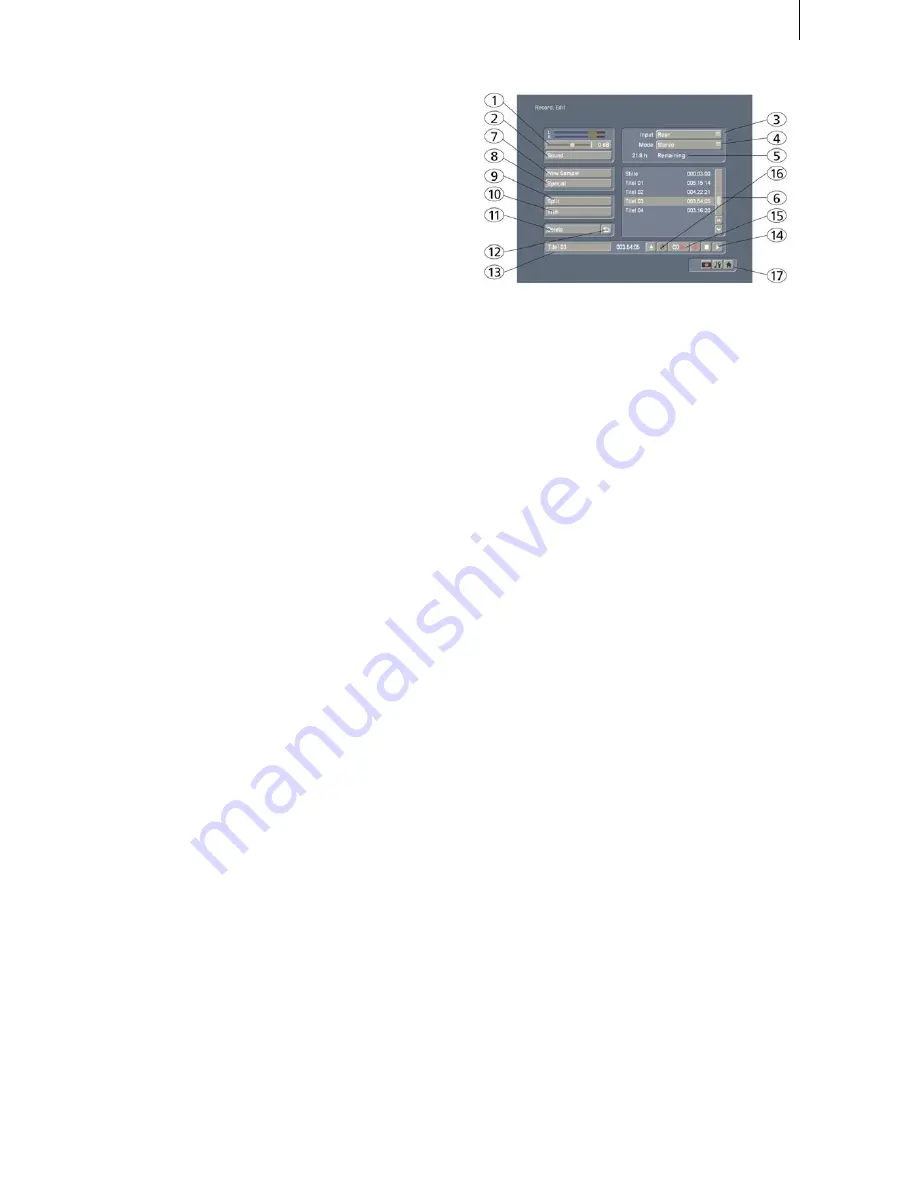
72
73
• Video transition effects are also displayed in
the Storyboard display of the Audio-Mix menu
in the form of an intermediate scene.
• Audio splitting by the bar. Audio samples can
be split at the touch of a button during play.
Audio mixing employs the same principle as
video editing:
1. Recording
of the raw (audio) data.
2. Splitting
of the audio sample into a number of
discrete passages (if desired).
3. Trimming
of these data, i.e. cutting out of un-
desired components such as coughing, residual
material from adjacent CD tracks, etc.
4. Special processing
of the audio sample or of a
part of it (e.g. interchanging of stereo tracks).
5. Insertion
of these audio samples into the
storyboard.
6. Adjustment of the volume
of the original
audio and of any commentaries and the back-
ground music to each other, and adjustment of
any fading.
7. Addition of audio effects
(if desired).
8. Fine adjustment
of the volume of individual
audio samples by means of wave form (if desi-
red).
9. Creation
(if necessary) of the complete sound
track (all stereo tracks are mixed on a single
stereo track).
10.
This just leaves
recording to tape
, and your
video is finished.
5.10 Audio Record, Edit.
Use this menu to record your audio material
by clicking on the round red Record button.
You can also use this function to split, trim and
name recordings.
(1)
Use the
volume display
to adjust the volume
level. Try to set the recording volume level as
high as possible so as to obtain optimum sound
quality, but do not over-modulate it. Click on the
scrollbar
below the volume display to change
the volume level. Move the scrollbar to the left
or right to reduce (to a minimum of -30 dB) or
increase (to a maximum of 20 dB) the volume
respectively. Flashing blue indicates that ever-
ything is in order, flashing yellow indicates a risk
of over-modulation during audio mixing (only if
several over-modulated segments are mixed),
and flashing red indicates over-modulation.
(2)
If your system supports the "Sound" button,
it can be used if an analogue input has been se-
lected, i.e.
Microphone, Front and Rear
. Before
recording audio material, click on the button. A
window is opened in which you can select the
Treble and Bass
from -12 to 12 dB.
(3)
Here you can see the audio input. The opti-
ons available differ of course according to your
particular model.
(4)
Select between
Mono and Stereo
modes.
When using a mono
microphone
, check that
Mono
is actually selected. If
DV
is selected as the
input, you can also select
Stereo B
. In this case,
the sound is recorded from a
second stereo audio
track
of the input device, provided the input is
in 12-bit, 32 kHz mode. Not all DV input devices
offer a facility for selecting this mode, however.
(5)
This field displays the
remaining capacity
of
the audio partition as a function of the selected
quality (the higher the quality, the shorter the
running time).
(6)
The audio samples which you have recorded
are automatically assigned a label (
A 1, A 2
, etc)
Summary of Contents for SMART EDIT 5
Page 1: ...User manual SMART EDIT 5 2nd edition ...
Page 100: ...274 06 06 ...






























